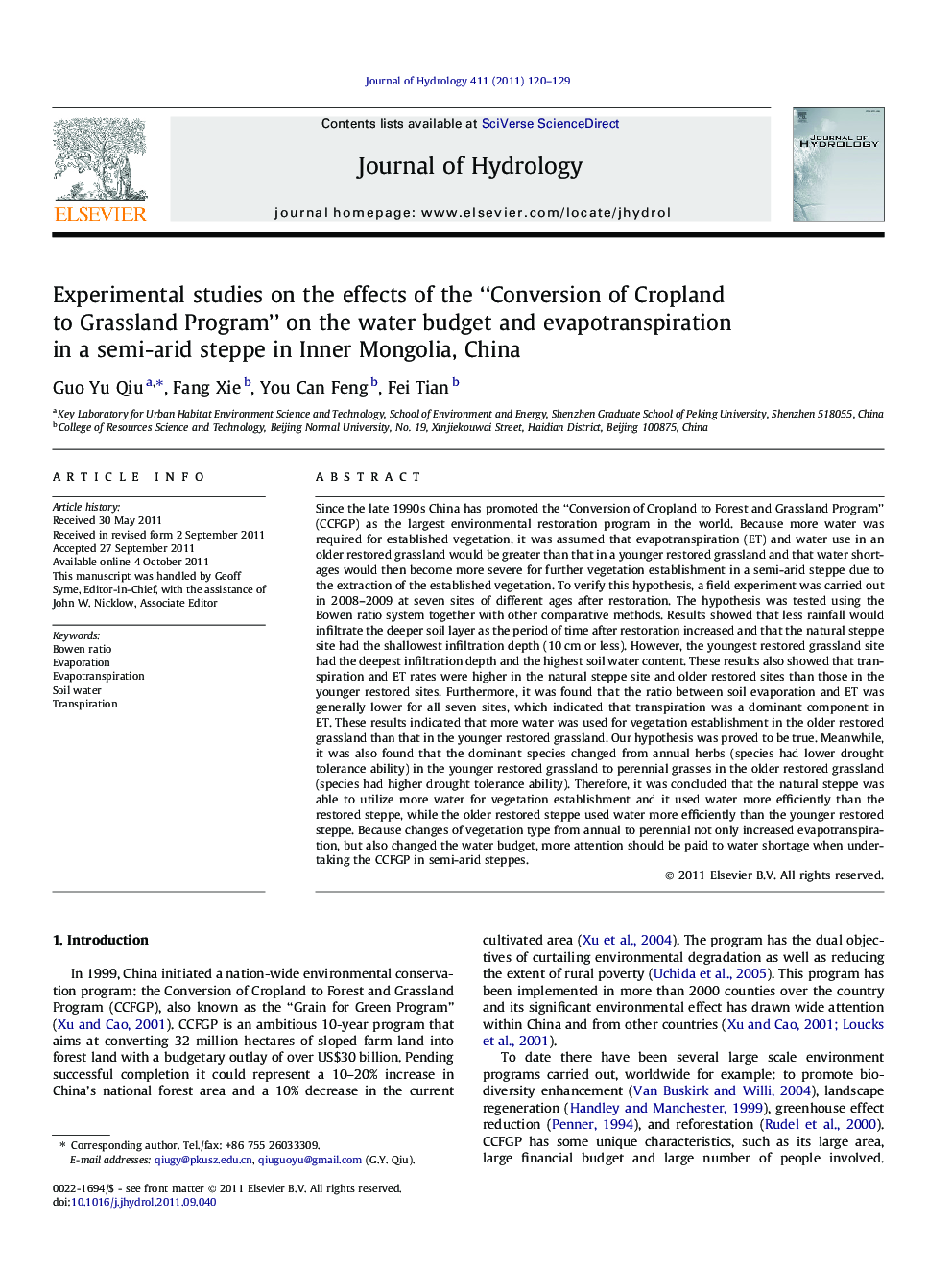| کد مقاله | کد نشریه | سال انتشار | مقاله انگلیسی | نسخه تمام متن |
|---|---|---|---|---|
| 4577351 | 1630007 | 2011 | 10 صفحه PDF | دانلود رایگان |

Since the late 1990s China has promoted the “Conversion of Cropland to Forest and Grassland Program” (CCFGP) as the largest environmental restoration program in the world. Because more water was required for established vegetation, it was assumed that evapotranspiration (ET) and water use in an older restored grassland would be greater than that in a younger restored grassland and that water shortages would then become more severe for further vegetation establishment in a semi-arid steppe due to the extraction of the established vegetation. To verify this hypothesis, a field experiment was carried out in 2008–2009 at seven sites of different ages after restoration. The hypothesis was tested using the Bowen ratio system together with other comparative methods. Results showed that less rainfall would infiltrate the deeper soil layer as the period of time after restoration increased and that the natural steppe site had the shallowest infiltration depth (10 cm or less). However, the youngest restored grassland site had the deepest infiltration depth and the highest soil water content. These results also showed that transpiration and ET rates were higher in the natural steppe site and older restored sites than those in the younger restored sites. Furthermore, it was found that the ratio between soil evaporation and ET was generally lower for all seven sites, which indicated that transpiration was a dominant component in ET. These results indicated that more water was used for vegetation establishment in the older restored grassland than that in the younger restored grassland. Our hypothesis was proved to be true. Meanwhile, it was also found that the dominant species changed from annual herbs (species had lower drought tolerance ability) in the younger restored grassland to perennial grasses in the older restored grassland (species had higher drought tolerance ability). Therefore, it was concluded that the natural steppe was able to utilize more water for vegetation establishment and it used water more efficiently than the restored steppe, while the older restored steppe used water more efficiently than the younger restored steppe. Because changes of vegetation type from annual to perennial not only increased evapotranspiration, but also changed the water budget, more attention should be paid to water shortage when undertaking the CCFGP in semi-arid steppes.
► We evaluated and quantified the impact of CCFGP on the water budget based on field experiments.
► We computed evapotranspiration and the ratio of evaporation to ET (E/ET), both in natural and restored grasslands.
► There was higher transpiration and ET in natural grassland and older restored grassland.
► Natural grassland used more water for vegetation and its water use efficiency was higher than that of the restored land.
Journal: Journal of Hydrology - Volume 411, Issues 1–2, 6 December 2011, Pages 120–129